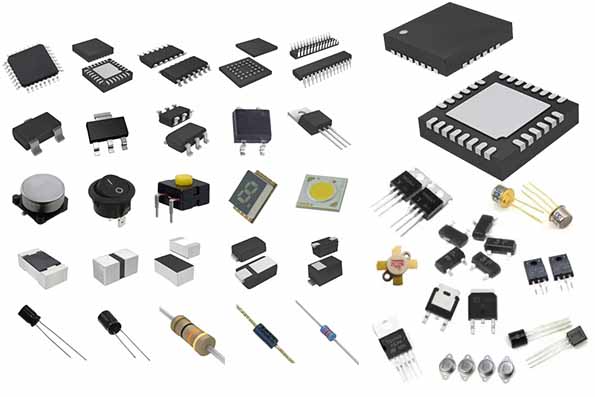Does your PCBA house check for component errors?
Electronics involves transforming information into electrical signals and using high-speed processing capabilities to perform tasks reliably and quickly. Electronic components and printed circuit boards (PCBs) are the fundamental parts of an electronic system.
Electronic components process information in the form of electrical signals, while a PCB serves as the structural platform on which these components are mounted and soldered, providing pathways for information to flow between components via PCB traces.
Explore our PCB component sourcing and stocking services to bring your electronics to market swiftly!

PCB traces are metal wires, typically made of copper, aluminum, or silver, that connect components. These traces are laid on an insulator material, usually fiberglass impregnated with resin. The type of dielectric material used can vary depending on the application of the circuit board in electron devices and circuits.
In recent decades, electronics technologies and product development have grown more complex. Understanding electronic components in electron devices and circuits is essential for building successful electronic products.
This article offers an overview of various electronic components in electron devices and circuits, focusing on selection parameters and standard sizes and shapes. These details are crucial for designing and manufacturing electronic products. For information on component failures in electron devices and circuits, see common errors in discrete components.
Common electronic components in electron devices and circuits include resistors, capacitors, inductors, diodes, LEDs, transistors, crystals and oscillators, electromechanical components like relays and switches, ICs, and connectors. These components are available in specific standardized packages suitable for various applications. Components in electron devices and circuits can be mounted using surface mount technology (SMT) or through-hole techniques.
Types of Electronic Devices: Passive and Active in Electron Devices and Circuits
Passive Devices in Electron Devices and Circuits:
- Resistors: Introduce resistance to limit electric current. Resistance is measured in ohms (Ω). Common varieties include carbon film and metal film resistors.
- Capacitors: Store electrical energy and release it when needed. Capacitance is measured in Farads (F). Capacitors block DC voltage and allow AC to pass.
- Inductors: Store magnetic energy when current passes through. Inductance is measured in Henrys (H). Inductors block AC and allow DC to pass.
Active Devices in Electron Devices and Circuits:
- Diodes: Allow current to pass in one direction, blocking it in the reverse direction. Types include rectifier diodes, Zener diodes, and LEDs.
- Transistors: Semiconductor devices used to amplify or switch electronic signals. Types include bipolar junction transistors (BJTs) and field-effect transistors (FETs).
Additional Components in Electron Devices and Circuits:
- Crystals: Made from quartz, they provide stable clock input to processors using the piezoelectric effect.
- Relays: Electromagnetic switches used to control high-powered circuits with low-power signals. Types include electromechanical relays (EMR) and solid-state relays (SSR).
Integrated Circuits (ICs) in Electron Devices and Circuits:
ICs are miniature electronic circuits containing transistors, resistors, and capacitors, performing specific functions such as data and signal processing. Types include digital ICs (e.g., microprocessors, memory chips) and analog ICs (e.g., operational amplifiers, ADCs, DACs).
SMT Device Sizes in Electron Devices and Circuits:
SMT components come in various standardized sizes. The most common sizes include 0201, 0402, 0603, 0805, and 1210.
Check out our “Design for Assembly Handbook,” which includes recommended layouts for components, common PCB assembly defects, and factors that impact PCB assembly costs in electron devices and circuits.
Selecting the right components in electron devices and circuits is crucial for efficient and effective electronic product design and manufacturing. Choose components from reputable manufacturers such as AVX, Kemet, Vishay, and Murata to ensure quality and reliability.
Pingback: What’s Schematic Diagram? - Contract Manufacturing
Pingback: Disadvantages of Surface Mount Technology (SMT) - Contract Manufacturing
Pingback: The Vital Role of PCBs in Renewable Energy - Contract Manufacturing The Vital Role of PCBs in Renewable Energy
Comments are closed.